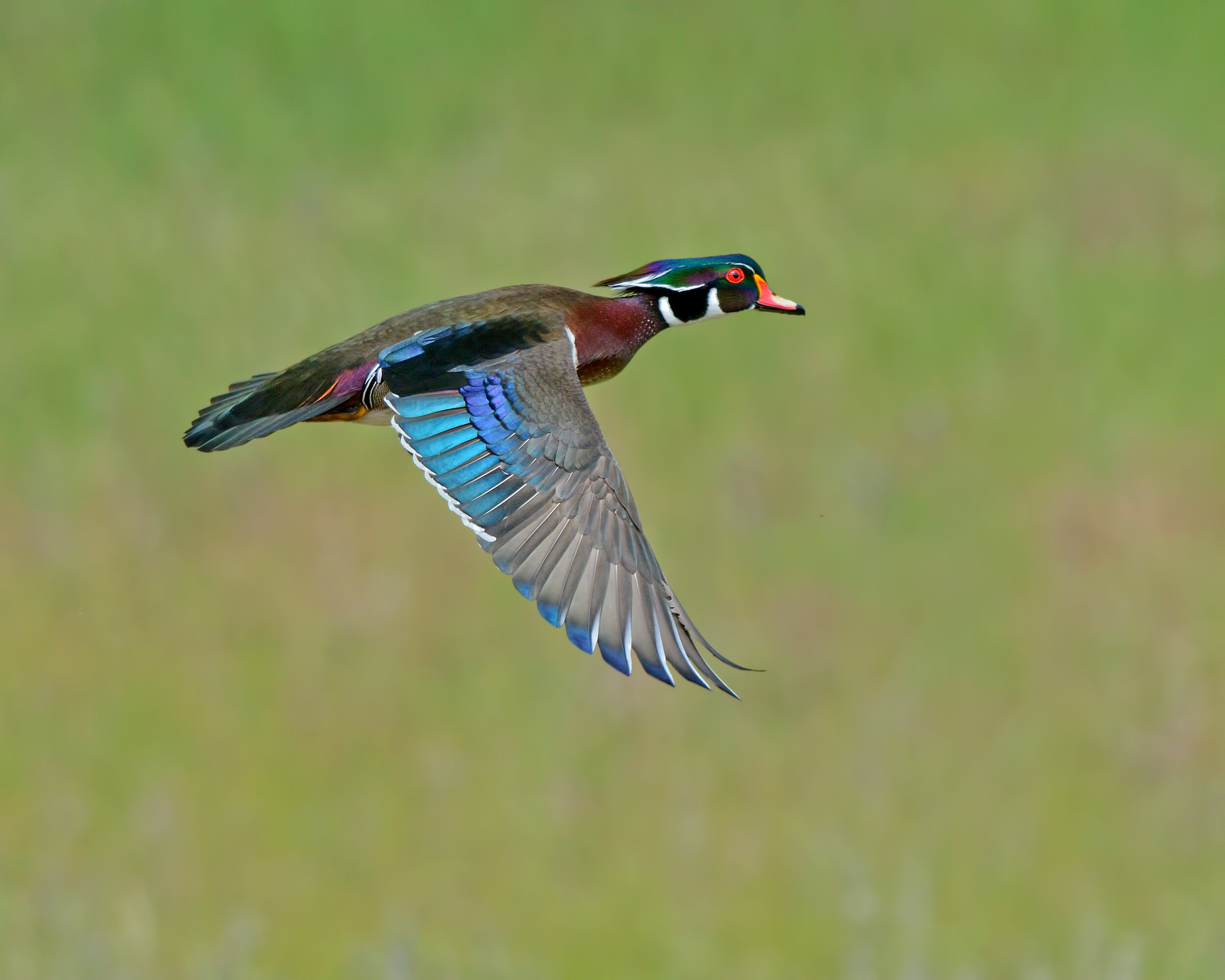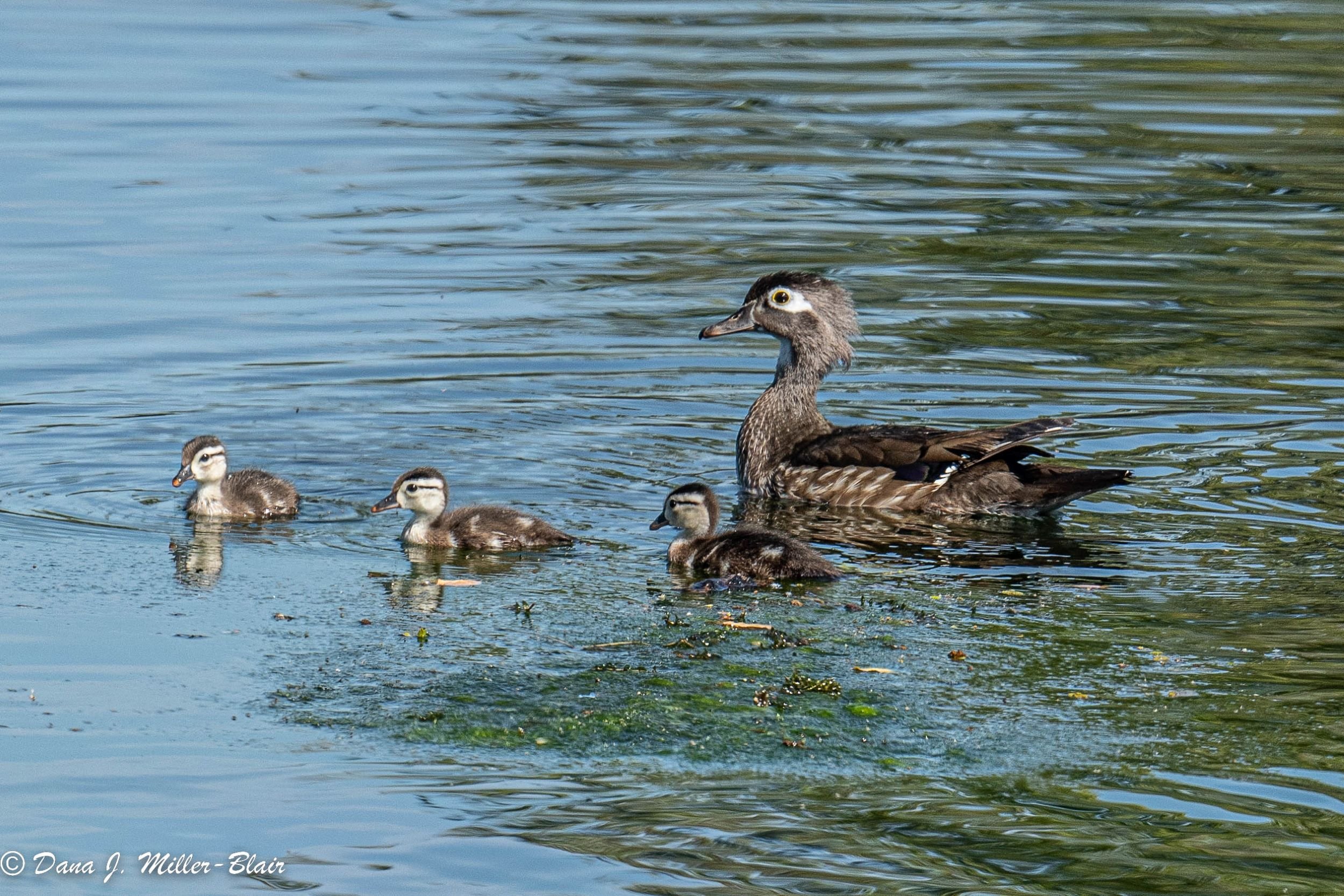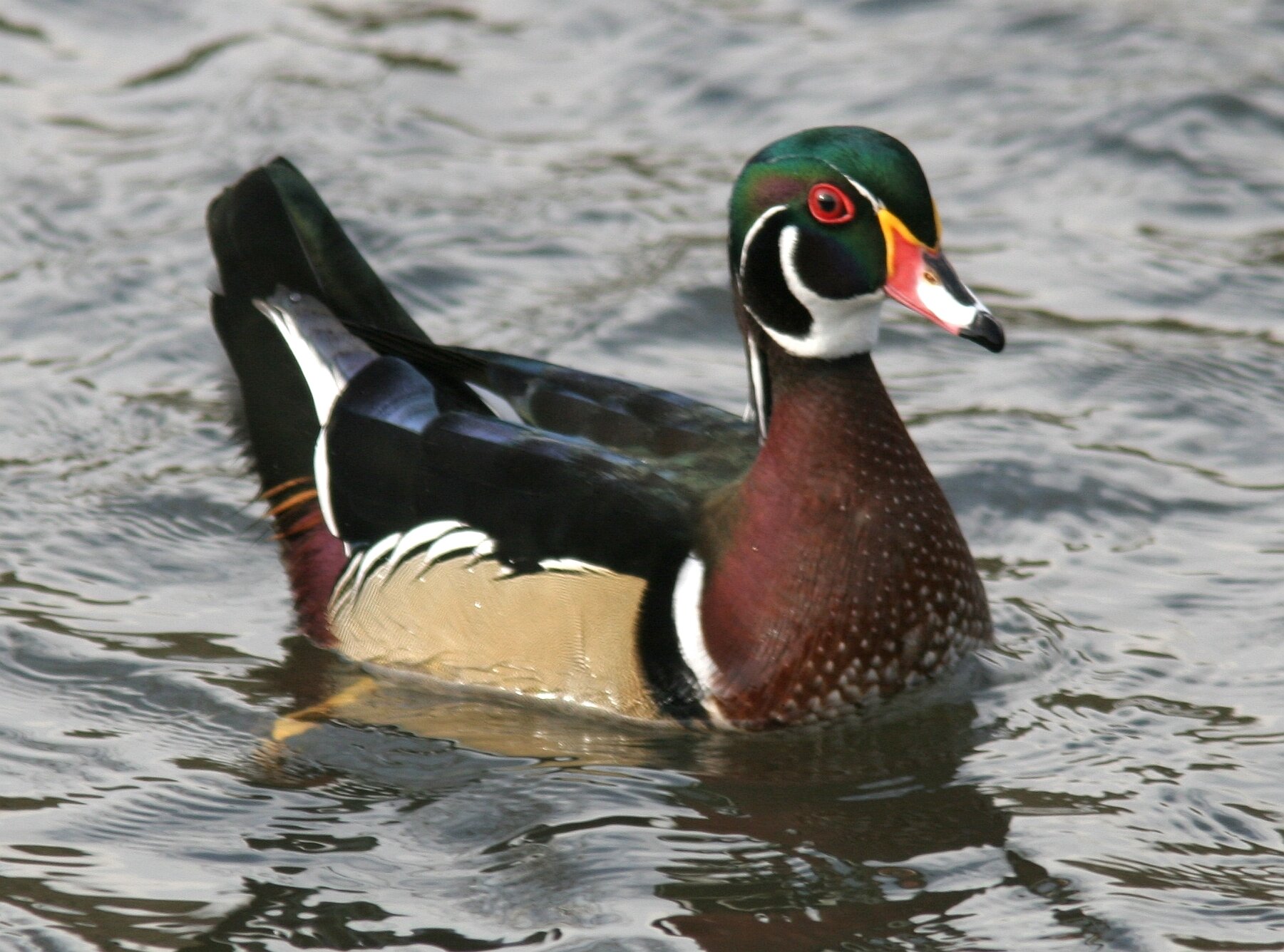Male Wood Duck, Image by Chris Conard
This month, let’s learn about the magnificent Wood Duck. Wood Ducks are medium-sized ducks and are a North American species. They are found in many states in the U.S., as well as in southern Canada and western Mexico. The Wood Duck is one of the few duck species that remain in the Sacramento Valley year-round. They are listed in a category or group called perching ducks because they perch in trees to preen or rest.
Some sources also include Wood Ducks in a group called dabbling ducks. Dabblers are ducks that feed close to the surface of the water and will either swim and skim the water’s surface or tilt their bodies head first into the water with their tails pointing upwards to grab food which is slightly underwater.
Adult male ducks are called drakes and adult female ducks are called hens. Wood Duck drakes have feathers of many different colors. Their appearance is an example of how beautiful nature can be; when you spot one, it’s as if an artistic masterpiece is gliding on the water.
Male Wood Duck, Image by Daniel Lee Brown
What do Wood Ducks look like?
Wood Ducks have large heads that have a crest that droops backwards, fairly short bills, long squared-off tails, and have a white border along their dark wings.
Wood Duck drakes have both green and purple on their heads. They also have bold white lines on their heads, cheeks, and neck areas. Wood Ducks have dramatic red eyes, reddish bills, black backs and tails, black and blue colored wings, tanish-yellow sides, reddish-brown chest and rump areas, and white bellies.
Wood Duck male and two females, Image by Mary Forrestal
Wood Duck hens are much less colorful. Except for a white belly, white throat, and white markings on their wings, they are mostly gray and brown. Wood Duck hens also have a bold white, teardrop-shaped patch around their eyes.
Juvenile (or young) Wood Ducks look fairly similar to hens. Juveniles, however, have spots on both their chests and bellies; whereas Wood Duck hens only have spotting on their chests.
Where do Wood Ducks live?
As the name suggests, Wood Ducks ‘require wooded cover for nesting’. They prefer wooded swamps or marshes; but can also be found in freshwater wetlands, shady ponds, creeks, shallow lakes, and quiet rivers. By using the strong claws on their feet, Wood Ducks can climb up into trees and perch securely on branches. They usually nest in tree holes (or cavities) too; but are not capable of digging holes for their nests. Wood Ducks must find holes that are already present and often use the ones that woodpeckers have made in the past. They will also use man-made nest boxes, which has helped increase their numbers. Hens use their own down feathers to put around the eggs in their nests.
Male Wood Duck, Image by Craig Swolgaard
Occasionally, Wood Ducks will nest either close to the ground or far from the water’s edge. However, they prefer their nests to be hanging over (or near) a body of water. Wood Duck ducklings typically jump from the nest the day after they hatch! Having water or wet ground below the nest will ensure a soft landing for the young birds. After jumping from the nest, the tiny ducklings immediately know how to swim, walk, and find food on their own. Wood Duck hens will watch over their brood (or young) for several weeks. The ducklings can be seen riding on their mother’s back while she swims. Although adult Wood Ducks usually sleep or roost on the water, hens with young often sleep along water banks or on logs that are tucked away from danger. The ducklings learn to fly at 8 or 9 weeks of age.
What do Wood Ducks eat?
Adult Wood Ducks mainly eat plant material. They enjoy eating seeds, aquatic plants, acorns, nuts, and berries; but they also will also eat insects, clams, snails, tadpoles, and salamanders. Therefore, adult Wood Ducks are omnivores. (Omnivores are animals that eat a variety of foods that include both plants and animals.) When there are no aquatic feeding areas nearby, Wood Ducks will search for food in open areas, such as agricultural fields. Juveniles only eat invertebrates (animals without a backbone) or sometimes small fish. As they age, their diet changes and they start eating plant material.
What do Wood Ducks sound like?
Wood Duck drakes have a soft, whistle-like call while hens have louder calls. You can listen to the calls of Wood Ducks below:
These calls of the Wood Duck are from xeno-canto. More Wood Duck vocalizations can be found at xeno-canto.org/species/Aix-sponsa.






